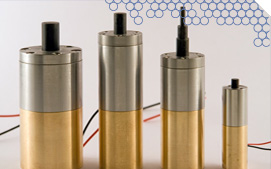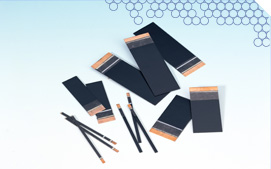Piezo stack actuators offer low stroke and a high blocking force. Based upon the user’s requirements stack actuators can be either discrete or co-fired.

Co-fired multilayer stack actuators, also called “monolithic stacks”, involve no adhesive, but rather a high temperature sintering of the complete ceramic and electrode pile. Operating voltages of a co-fired stack are up to 200 V. Rectangular cross sections are typical due to the ease of cutting processes in production.
Both the discrete and co-fired stacks can be insulated with a coating material — a bare stack — or encased in stainless steel when protection from mechanical stress and environmental extremes are needed.


